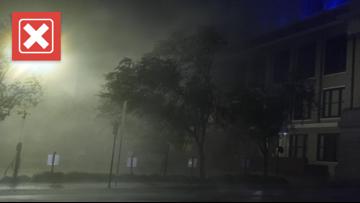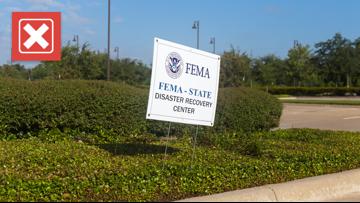A series of powerful storms is bringing flooding, damaging winds and mudslides to areas throughout California, leaving tens of thousands of people without power.
The National Weather Service warned of a “relentless parade of atmospheric rivers” in the state.
But what exactly is an atmospheric river? VERIFY is answering five questions about the weather system, including how it’s defined and how atmospheric rivers are rated on a scale of one to five.
THE SOURCES
WHAT WE FOUND
What is an atmospheric river?
Atmospheric rivers are long, narrow regions of the atmosphere that carry water vapor through the sky, according to NOAA.
USGS says atmospheric rivers are “always flowing somewhere on Earth, even though they don’t consistently stay in one place like rivers on the ground.” These rivers in the sky can be hundreds to thousands of miles long, and hundreds of miles across.
Atmospheric rivers commonly occur from fall through spring – particularly from December through February – and can carry as much water as actual rivers, FEMA’s National Flood Insurance Program says.
What kind of weather do atmospheric rivers bring?
When atmospheric rivers reach land, they often release water vapor as rain or snow.
“In fact, just a few atmospheric river events each year cause up to half of the annual precipitation on the West Coast,” NOAA says.
Though atmospheric rivers often aren’t dangerous and can provide beneficial precipitation, they can also bring extreme weather that causes flooding, mudslides and other damage.
Strong atmospheric rivers cause about $1 billion in flood damage every year in western states and were responsible for more than 80% of flood damage over a 40-year period, according to FEMA’s National Flood Insurance Program.
How do atmospheric rivers form?
Atmospheric rivers typically form in tropical regions near the equator, where warm temperatures cause water to evaporate and rise into the atmosphere.
USGS explains that atmospheric rivers typically flow in the lowest part of the atmosphere about a half-mile to one mile above the ground. The atmospheric rivers are pushed along by strong winds.
When the atmospheric rivers move inland and flow over mountains, they are pushed upward. This causes the water vapor to condense into droplets, which fall as precipitation in the form of rain or snow.
More from VERIFY: What is a bomb cyclone? 5 Fast Facts about the winter storm
Are atmospheric rivers rated based on their severity?
Similar to hurricanes and other storms, atmospheric rivers are rated based on their severity.
A scale created by a team of meteorology experts places atmospheric rivers into five categories based on their water vapor content and duration. That scale was published by the American Meteorological Society (AMS) in February 2019.
An atmospheric river that lasts in an area for less than 24 hours is demoted by one category, and is promoted by one category if it lasts for more than 48 hours, according to the paper published by the AMS.
The scale describes “a range of scenarios that can prove beneficial or hazardous based on the strength of atmospheric rivers,” experts at the University of San Diego’s Scripps Institution of Oceanography say. It ranks atmospheric rivers from 1 to 5 and categorizes them as “weak,” “moderate,” “strong,” “extreme” and “exceptional.”
Here’s a breakdown of those rankings:
- AR 1 (Weak): Primarily beneficial.
- AR 2 (Moderate): Mostly beneficial, but also somewhat hazardous.
- AR 3 (Strong): Balance of beneficial and hazardous.
- AR 4 (Extreme): Mostly hazardous, but also beneficial.
- AR 5 (Exceptional): Primarily hazardous.
“The scale recognizes that weak [atmospheric rivers] are often mostly beneficial because they can enhance water supply and snow pack, while stronger ARs can become mostly hazardous, for example if they strike an area with conditions that enhance vulnerability, such as burn scars, or already wet conditions,” experts who created the scale said. “Extended durations can enhance impacts.”
What is a ‘Pineapple Express’?
A “Pineapple Express” is the name of a specific type of strong atmospheric river. This atmospheric river gets its name because moisture builds up in the tropical Pacific around Hawaii, where pineapples are grown.
When a Pineapple Express hits land in the western U.S. and Canada, it can cause heavy rain and snow, NOAA says. In California, a Pineapple Express can bring up to 5 inches of rain in one day.













